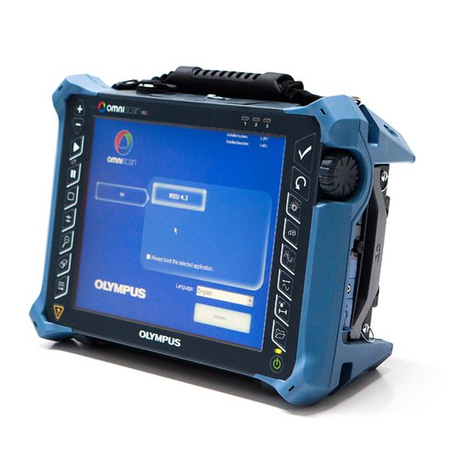
8 BondMaster 600 — Getting Started Guide
ERASE Direct function key used to erase the currently
displayed image.
RUN Direct function key used to change the RUN
(display) mode. Depending on the operation mode,
different displays are available. NOTE: changing the
RUN (display) mode also changes the available
settings in the BondMaster 600 menus.
FREEZE Direct function key used to freeze the image
displayed on the BondMaster 600 for further
evaluation. When the image is frozen, the
BondMaster 600 also allows signal calibration, and
changing the gains or angle.
REF/SAVE Direct function key used to save images and settings
in the BondMaster 600 memory. When this key is
pressed once (and released), the currently displayed
image and settings are saved. When this key is
pressed and held, the current BondMaster 600 image
is set as the reference memory display.
MAIN Provides access to the main menu, which controls
functions such as frequency, gain, angle, filters, RF
signal, and gate.
DISP/DOTS Provides access to the display menu, which controls
functions such as display mode, position, trace, grid.
Also allows you to add reference dots (not available
in PC Swept mode).
ALARM Provides access to the alarm menu, which controls
functions such as alarm type, dwell time, horn, and
alarm position.
MEM Provides access to the memory menu, which controls
functions such as previewing stored memory files,
recalling and editing stored files, capture mode,
capture time, and user information.
ADV/SETUP Provides access to the BondMaster 600 advanced
settings, including the APPLICATION SELECTION
menu, the ALL SETTINGS menu, instrument mode,
colors, password, systems setup, reset, calibration
menu, unlock options, and legal/regulatory
information.
FULL/NEXT Used to expand the instrument display to full screen,
or to select items in the menu.
A A Function key
B B Function key
C C Function key
English International Function






























